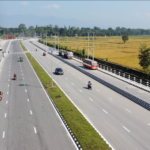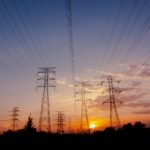Whenever I meet people lamenting that Nepal is going down the tube, I just ask: when was the last time you travelled within Nepal apart for leisure, not just business? Traveling for leisure within your own country can be super fun as it allows you to enjoy nature along with seeing the transformations. You get to meet with diverse people and listen to their stories. Within a few hours of driving, you can traverse diverse geography, terrain, vegetation, bio-diversity, language, and people. For instance, I have always been intrigued by the stretch of 40 kilometres between the cities of Biratnagar and Dharan that feels like two different worlds of people and culture! Within six hours of drive from Kanyam to Janakpur, one can actually get to appreciate how diverse is Nepal and what it has in store for its travelers.
During my recent trip to Eastern Nepal, I observed many transformations. Access to electricity has increased and so has the reliability of supply. Hills dotted with lights are a sight that one cannot miss. The road networks are expanding and there is more than one way to get to a place albeit a few roads are still in the construction phase. Therefore, one can think of doing different routes and enjoy the different views without repeating the same route. The greenery has increased so much so that one can really see the increase of forest cover from 25% to 45% in the past thirty years with their own eyes.
Hotels are mushrooming, so accommodation options are no longer a problem. Likewise, variety of eateries is increasing each day. Perhaps for many, this may not be anything new, but for people like us who compare traveling to these places for the last thirty years, one can just feel so good about the change. Gone are the days when finding hotels that had a toilet within five minutes walking distance or a place that offered food beyond a few items was a challenge. Now, options abound in a sea change..
The rise of charging stations and the presence of commercial electric vehicles on highways is a noteworthy sight. More motorbike explorers are venturing across Nepal. Religious pilgrimage seems to have picked up in the past twenty years, particularly from India who make trips to eastern Nepal. The border at Pashupatinagar is so different than at Kakarvitta. I find it so intimate as one can just walk across from one country to the other. The border economies on both sides are benefiting from more people visiting each other’s countries.
Compared to pre-pandemic times, four noticeable changes stand out. First, the proliferation of digital payments. From fuel stations to roadside eateries to shops QR codes are available everywhere. It was my first trip where I made all payments, apart from parking fees, digitally.
Second, internet has changed the way people live, eat, dress, and move. A gulmohar tree in Burney Tea Estate has created an economic hub with people visiting primarily to take pictures for social media. The mobile connectivity and internet availability also make travel secure as people can readily connect. If there is a breakdown or an accident, help is just a call away.
Third, the availability of anything you need has vastly improved. We crossed five Bhatbhateni Super Market in five cities that have come up in the last five years. Pharmacies for medicines and restaurants with a working fridge have become commonplace. Coffee shops are also emerging. Roadside mechanics have set up shops at regular intervals. From carrying fuel in jerrycans during trips to seeing fuel stations at regular intervals, what a comforting change!
Last but not least, internet and phone availability also mean one need not shun a trip just because one will not be connected. Highways have good connections too. One can schedule work calls or virtual meetings without the stress of not being able to get connected. Reliable electricity availability means one can charge laptops and devices to ensure that work can happen remotely if needed.
Every time I take a trip outside Kathmandu, I keep thinking of whether it is the only certain set of folks in Kathmandu that has set this narrative of a problem-filled Nepal. Perhaps, they are in constant denial of the change as they are the ones who continue to lose with transformation. The people outside Kathmandu today have many options, unlike in the olden days when everything was Kathmandu-centric. They are connected to the world, they have global options, and they would like to make the place they are living in a better one. Do explore Nepal and see the changes that are taking place firsthand. You would definitely return with a positive perspective on how Nepal is changing for the better.
Sujeev is the founder CEO of beed. He leverages over 25 years of experience in diverse fields and geographies to advise, lead and inspire. With comprehensive networks in Nepal’s public, private, civil and diplomatic sectors, Sujeev is a trusted business and policy advisor and respected strategic thinker. From economies of developing countries to economies of human beings, he moves across different worlds, with his passion for the Himalayas being the axis.





